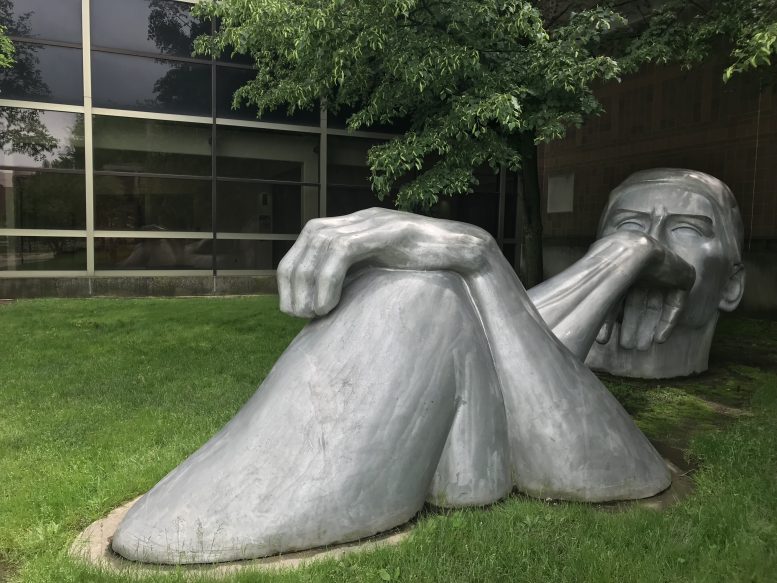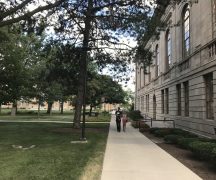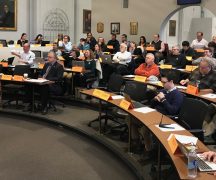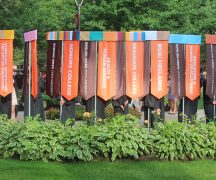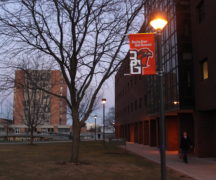By DAVID DUPONT
BG Independent News
At this month’s Faculty Senate meeting concerns about the administration’s new program viability initiative were voiced.
When the memo went out to academic units, it was the first many of faculty members had heard of the initiative. Faculty Senate Chair Christopher Frey said he has heard concerns from many faculty members.
Senators William Albertini and Brent Archer said the way it as sprung on faculty at a busy time of the semester was all too typical of the lack of the administration’s transparency.
Provost Joe Whitehead said that the issue had been discussed in some units. There’s no good time to make this kind of move.
Program viability study looks at how many students are enrolling in particular majors or programs and how many are staying.
Whitehead said the initiative sprang from discussions with trustees. While the trustees approve new programs, they do not hear about how existing programs are faring.
“The question is,” Whitehead said, “do our program portfolios really reflect the interests of our students and families?”
This annual survey is intended “to see how we can maximize student success and enrollment… to make sure we’re moving in right direction.”
These issues are especially critical, he said, because the “demographic cliff” that was predicted for 2026 has now appeared. That means fewer students are taking the traditional path of coming straight to college from high school.
BGSU has addressed this by developing professional graduate programs, in business and the newly created doctorate in physical therapy, and more career focused undergraduate programs such as the new School for Nursing as well as a number of programs in the College of Technology, Architecture and Applied Engineering.
Whitehead said the two parameters that will be looked at closely will be enrollment over a three year period, and retention. Whitehead noted that students switching majors often results in students taking longer to graduate, and that costs them and their families money.
If a program has increasing enrollment and retention at or above the average of 78.3 percent, then nothing will be done.
However, if a program is seeing declines in both that will require a plan to address that. Ultimately, he said, it could result in ending the program.
“The idea to have a continual analysis of programs,” Whitehead said. “That’s what program viability analysis is all about.”
For many faculty, though, the very name sounds ominous. What they fear is the kind of draconian cuts like those experienced at the University of Akron and Youngstown State where programs and tenured faculty positions were eliminated.
Whitehead assured the senate that the situations were different. Those institutions were facing serious budgetary problems.
In an interview after the meeting, David Jackson, president of the BGSU Faculty Association, said that “program viability” was “an unfortunate choice of words.”
The concern is that this push comes as the pandemic is slowly receding.
Programs may have declining enrollments because of the pandemic. “We’re worrying about programs being judged for factors beyond our control.”
He said the university is increasing the number of programs it offers at a time full-time undergraduate enrollment is declining, so there’s likely to be dips in the number of students in programs.
Any elimination of programs would have to be done following the procedures spelled out by the academic charter and the collective bargaining agreement with the faculty union, Whitehead told the senate.
Jackson said if any cuts are made the union would demand those provisions be followed completely.
Frey said that the state and “outside bodies” are so focused on those metrics raises questions. Does that penalize students who want to double major? What does the push to get students into professions mean for the humanities? Those humanities majors often continue their education in graduate school.
These are issues, he said, the senate’s Academic Affairs Committee will be considering.
“I’d just like to ask people to look at this is a positive way,” Whitehead said. “We’re trying to enhance what we’re doing here at Bowling Green State University so we can serve students … better and help them be more successful while they’re in college and also more successful when they graduate, and we want them to graduate in a timely manner.”
“Our hope and belief is that there is no master plan,” said Jackson. “That this is a real opportunity for the units to show why their program is necessary.”

